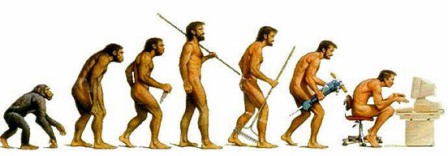CCTV Technology Continues to Evolve
Sunday, March 5, 2006Posted by Brawlin Melgar
By John Beagle Camera Security Now 
CCTV systems are more advanced than the basic camera and monitor configurations that first appeared in the 1960s. Systems from the 60s were basic, consisting of just black and white cameras connected by coaxial cable to black and white monitors.

CCTV systems are more advanced than the basic camera and monitor configurations that first appeared in the 1960s. Systems from the 60s were basic, consisting of just black and white cameras connected by coaxial cable to black and white monitors.
Each camera had its own monitor. CCTV systems were introduced progressively throughout the 1960s and 70s.
New applications of camera security systems included underground trains and stations, football stadium, retail stores, shopping centers, public housing, community parks, garages and parking lots.
Slow Evolution
The basic technology evolved slowly during this period, the only real developments being the adoption of solid state cameras and the integration of VCRs. 'First generation' CCTV technology was initially impeded by some fairly major performance related problems.
Not only were early VCRs temperamental, but the quality of the recordings achieved often left a lot to be desired. The combination of low resolution camera images, poor quality video tapes and low specification recording heads often meant that grainy and unclear images couldn't be relied on even for basic identification purposes.
VCR technology couldn't allow the operator to review and record events simultaneously and it was a very time consuming process to find and review specific events.
There was no motion detection facility and no way of viewing events from a remote location. Even though early CCTV systems provided only relatively basic functionality and moderate performance, they were quite expensive - both in terms of the initial equipment cost and installation. There was also a lack of qualified and skilled installers.
The 'next generation' of CCTV system arrived in the mid 90s. The new technology was a computer based Digital Video Recorder (DVR) This allowed images to be recorded at much higher resolution than had previously been possible and eliminated a major problem with first generation CCTV systems – Video Tape!
Using DVRs using IP (Internet Protocol) technology, allow cameras to be controlled over a local area network (LAN), a wide area network (WAN) or via the internet. With such flexible access, the modern generation of CCTV cameras may be operated remotely from a control center or, in fact anywhere with internet access. Equally, high quality digital images may be streamed anywhere and captured at a convenient and secure location. But it isn't only the operating platform that has developed significantly; camera technology too allows far more functionality.
Today's generation cameras can PTZ - pan, tilt and zoom, have higher resolution options, a large variety of lenses and are also capable of operating in 'night vision. Audio is also now part of CCTV DVR technology. An operator is now able to synchronize motion based video events with audio analysis. Two way audio transmission allows the operator to question possible intruders, give instructions to staff and to record/search/replay in both audio and visual form. Next generation DDTV DVR systems are compatible with earlier camera technology, and are scaleable, flexible and can be integrated with a broad range of other management systems, such as access control and building management systems.
CCTV has certainly come a long way since the 1960s; it's clear that the futu
